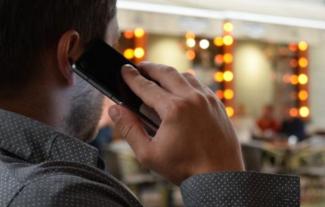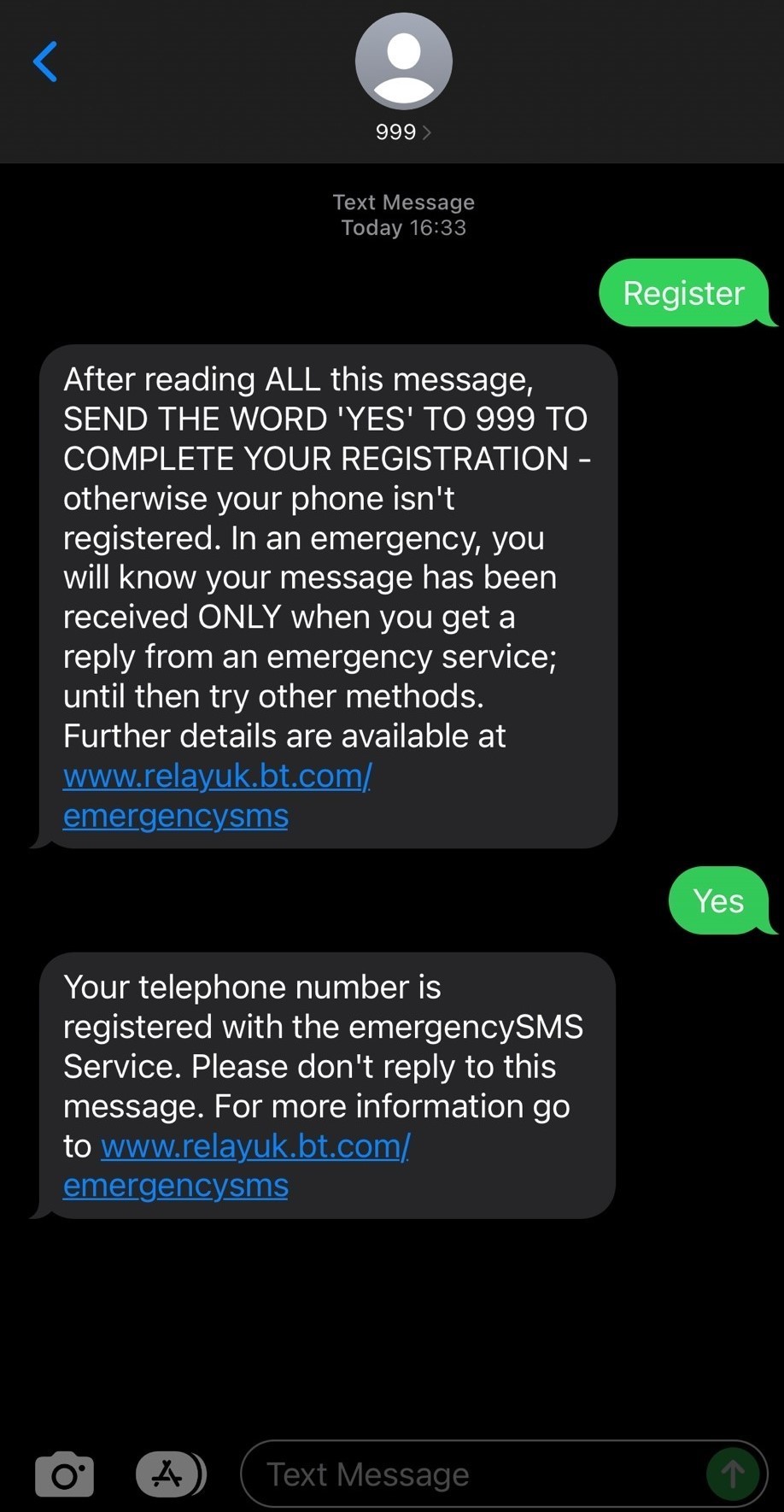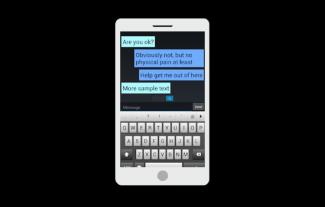Contacting 999 & First Aid

Practical advice on contacting emergency services and carrying out first aid if you stammer.
Contacting 999 can be an issue if you have difficulties speaking. So too can communicating instructions when carrying out first aid on an injured person. Here are some options and tips to help you.
Contacting emergency services
The 'Silent Solution' option
If you need to phone 999 but have difficulties getting words out, the 'Silent Solution' can help. It lets you either cough, tap your device or press 55 on your keypad to get through to the police.
Here's how it works:
- Dial 999
- A recorded message will ask you to: respond by coughing or tapping your device. Or by pressing 55 on your keypad.
- This lets the operator know it's a genuine emergency and you'll be put through to police.
Sending an emergency text
Rather than making a phone call you can alert police, ambulance, fire or coastguard services by texting them. This is through their 'Emergency SMS' (short message service) system.
Note: It is suggested you use this method only if you have no other option. This is because it takes longer than phoning 999 to get assistance.
How to register for the Emergency SMS
To use the Emergency SMS system you need to register your phone first. So if you think you'd use this option in an emergency, register now. Here's how to do it:
- Text the word 'Register' to 999.
- You will receive a text message with terms and conditions.
- Reply to the message with the word 'Yes'.
- You should then get a confirmation text message.
Here's an example of what it will look like on your phone:

If you do not receive any messages, check with your mobile provider to see if they support the Emergency SMS service.
In an emergency situation
- Compose a text message and include the following:
- The service you need. Eg, 'ambulance', 'police', 'fire' or 'coastguard'.
- Details of the emergency. Be brief and precise. For example: 'Woman having stroke'.
- The location. Include the name of the road and town, and, if possible, more details such as the house number, nearby landmarks or main roads.
Here are a few examples: 'Ambulance. Woman having Stroke. Outside Smith's Estate Agents. Whitmore Way, Basildon SS14'. Or 'Police and Ambulance. Car accident. 2 casualties injured and responsive. A12 Brentwood'.
2. Send the message to 999. Emergency services will reply either telling you that help is on the way or asking for more information.
Do not assume that your message has been delivered until you get the reply. This may take a couple of minutes. If at any point you are in doubt the message has been received, try and ask someone to call 999 if you have to.
Apps for communicating with people around you
If you are in an emergency situation whilst in public, you might find it hard to communicate with people around you. If you use an Apple device, an app called 'Emergency Chat' can help. Here's how it works:
Setting up the app
- Download the Emergency Chat app from the Apple store now. That way you can use it straight away in an emergency.
- Once it's downloaded, open the app. It will prompt you to set up an emergency message that will display any time you open the app. For instance, you could type 'I am giving you my phone because I find it hard to speak, but I am still capable of text communication. Press continue so we can carry on'.
- Press save and close the app.
In an emergency situation
- Open the app and the message you have saved will automatically appear. Hand the phone to somebody around you to read.
- When they read the message and press continue, you can both type in text messages, passing the phone between you. Here's an example of how it would look:

Applying first aid
Many people, even if they don't stammer, can be put off from carrying out first aid. They might be afraid of getting it wrong or making an injury worse. First aid Instructor Rob Lazaro tells us what you can do.
In reality, first aid is about giving it a go. In serious situations, the job of a first aider is to keep someone ticking over until the emergency services arrive, or until you take them to A&E or even their GP.
Once you've called an ambulance, or if the situation is not an emergency, you can then give First Aid to the patient using any skills learnt on a First Aid course.
As a First Aider, you will need to get consent from a casualty to treat them. If somebody is responsive, then they need to express consent. We call that 'Expressed Consent'.
However, consent does not need to be verbal. Some casualties will not be able to respond verbally due to language barrier or an injury, etc.
Use body language so that a casualty can follow your instructions. Simple signals using hands can help, such as miming a 'phone sign' or placing your hand on your chest to show you can help. Offer a hand to help them off of the floor, or place your own hand on top of a wound to help you bandage it.
All the patient needs to do is allow you to treat them. If a casualty is unresponsive then you have 'Implied Consent'. This means if a casualty could answer you, they would want you to help them, as simple as that.
First aid is all about giving it a go. Just the initial assistance could go a long way for someone who has injured themselves. As soon as other people arrive they may take over. A First aider does not need to deal with the entire event.
As easy as it sounds, only 1 in 20 (5%) people in the UK would feel knowledgeable, confident and willing to administer First Aid on someone*.
In a situation where emergency services are delayed, the more people we have to help people the better, so please don't let speech difficulties put you off and consider getting some First Aid training. You could save a life.
If you have any questions about anything included here, email editor@stamma.org
Rob Lazaro is a First Aid Instructor at Train2Help.
*1 British Red Cross Jan 2018.
































